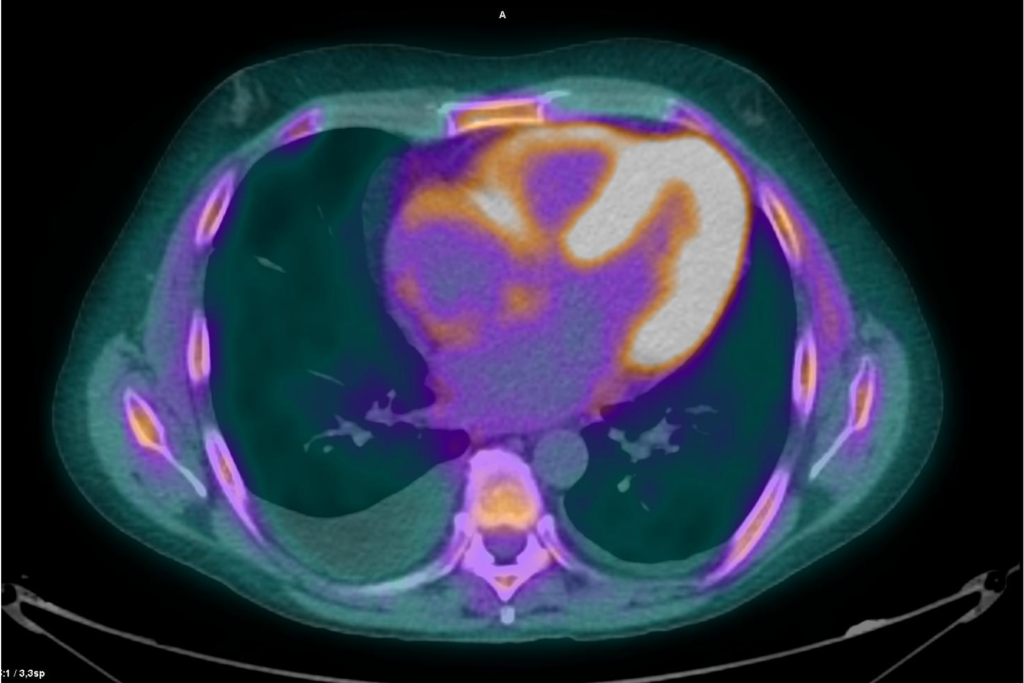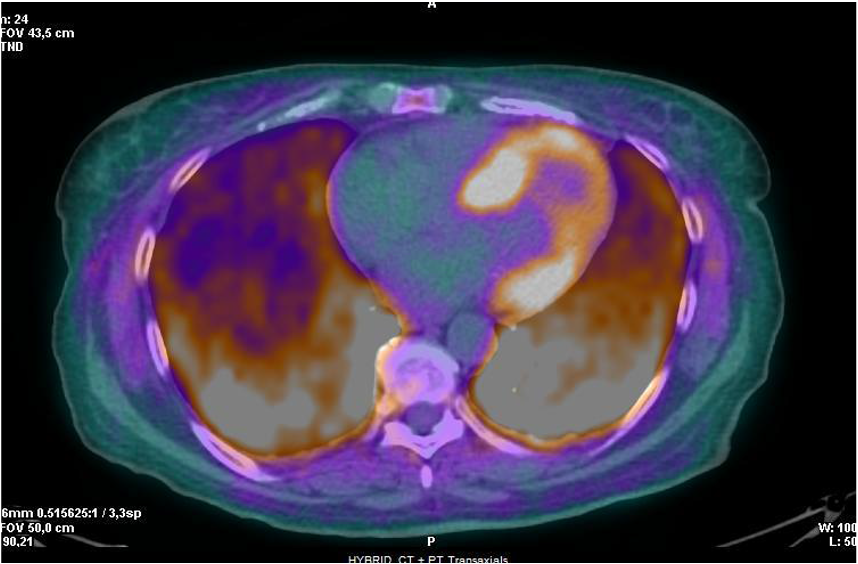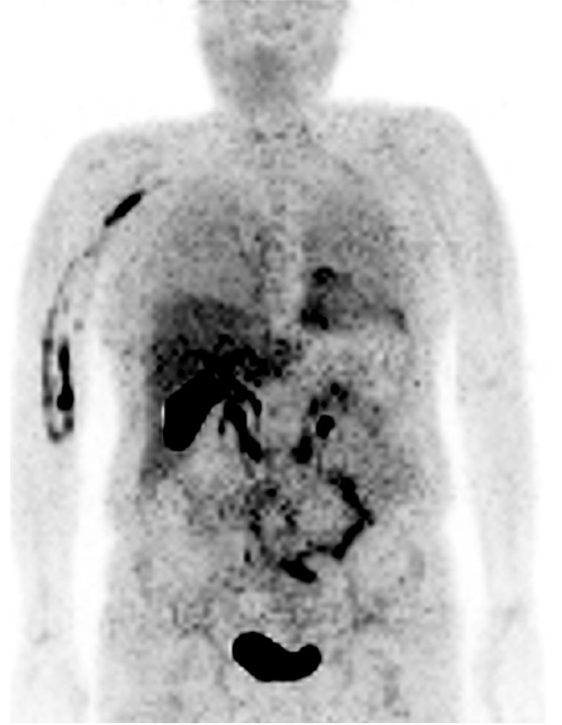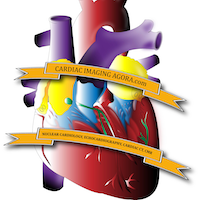MCQ : Nuclear-08
72 year old woman, no risk factors Recent onset of Fatigue and dyspnoea.
ECG: Low voltage
Echo: Septal hypertrophy (13 mm), Diastolic dysfunction
Troponine I 45
BNP 301
Which is the best interpretation of these images?
A) 99mTc DPD, TTR+ Amyloidosis
B) FDG PET, Myocarditis
C) F Florbetaben PET, AL Amyloidosis
D) 201 Thallium, Viable myocardium



The correct answer is: C) F Florbetaben PET, AL Amyloidosis
This is an example of Positron emission tomography (PET) with 18F-florbetaben in patient with light chain amyloidosis: a diffuse myocardial uptake retention is present.
The whole-body acquisition indicates a multiorgan tracer uptake, also.
Up to date:
Amyloidosis is a group of diseases characterized by misfolded protein deposition in various organs, leading to progressive organ failure. The 2 most prevalent types are immunoglobulin light chain (AL) and transthyretin (ATTR) amyloidosis. In both these forms, the heart is commonly involved, causing increased myocardial wall thickness and eventually heart failure.
Accurate diagnostic methods that promote early diagnosis of CA are crucial.
New positron emission tomography (PET) tracers have shown promising diagnostic performance, although there are still no larger studies in cardiac amyloidosis:
Fluorine 18 [18F]-Florbetaben: Fluorine 18 [18F]-Florbetaben, a 18F-labeled stilbene derivative, has a high binding affinity (Ki .6.7 nmol/l) to beta-amyloid. [18F]-florbetaben PET acquisitions can discriminate cardiac involvement due to AL amyloidosis from ATTR amyloidosis and from other non-CA conditions mimicking infiltrative disorders. This tracer may represent a promising noninvasive first-step tool for the diagnosis of AL amyloidosis, which is still often challenging and delayed. (Genovesi et al, JACC CI 2020, doi: 10.1016/j.jcmg.2020.05.031)
[18F] florbetapir: An autoradiography study demonstrated direct binding of [18F]florbetapir to AL (and transthyretin) deposits and cardiac imaging with [18F]florbetapir has been shown to be a feasible and highly specific molecular imaging marker of amyloid deposition in humans. In a recent study, Cuddy et al, demonstrated that direct imaging with [18F]florbetapir PET allowed detection of amyloid burden below the thresholds recognized for indirect imaging parameters. This improved sensitivity will allow earlier detection of cardiac involvement. (Cuddy et al, JACC CI 2020 doi: 10.1016/j.jcmg.2020.02.025)
Pittsburgh compound B, [11C]PIB, is the original amyloid-binding tracer for PET and was constructed to detect brain amyloid deposits in vivo in Alzheimer disease. In a recent study it has been demonstrated that [11C]PIB-PET was an excellent method to distinguish both ATTR and AL subtypes of cardiac amyloidosis from healthy and hypertrophied controls, with high accuracy for both simple visual analysis and semiquantitative measurements. [11C]PIB uptake was somewhat associated with symptoms and signs of cardiac dysfunction, and may potentially reflect disease burden, although further studies are needed to evaluate the role of PIB-PET in follow-up of CA patients. (Rosengren et al, JACC CI doi: 10.1016/j.jcmg.2020.02.023).
![]()
